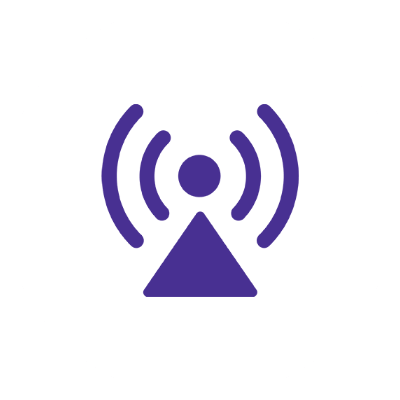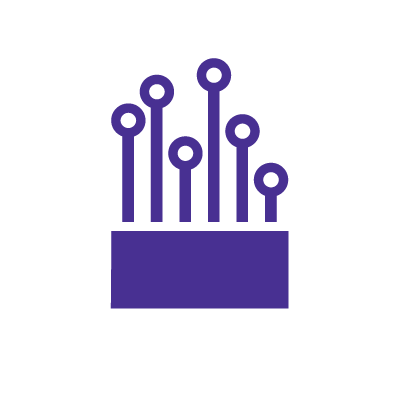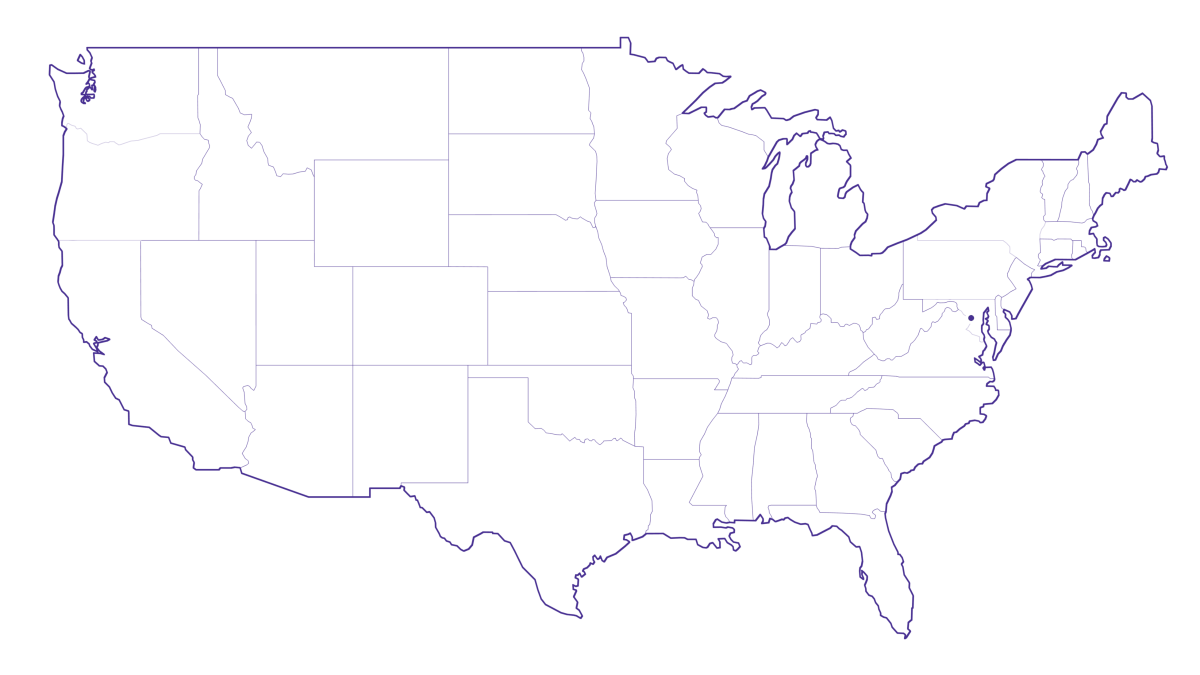What is 5G home internet? (& is it good enough?)
By the end of 2027, global 5G subscriptions are forecast to reach 5.9 billion. 5G’s market share continues to grow, but how does it compare to cable and fiber?
Organizations are investing in 5G wireless and internet infrastructure to support 5G home internet. But, though 5G home internet can be reliable, it’s still a newer technology and not as established as a wired broadband connection.
In this article, you’ll learn more about 5G home internet and how it compares to traditional fiber or cable solutions.
What you'll learn:
- What is 5G home internet?
- How fast is 5G home internet?
- 5G reliability for home use
- Coverage of 5G home internet
- Is 5G home internet good enough?
- 5G home internet vs. fiber internet
- Get the best of 5G and fiber-powered connectivity with Astound
- Bottomline: Is the cost of 5G home internet worth it?
- Frequently asked questions
- Looking for more topics?
The technology gap
You deserve better internet
5G Home Internet Fixed Wireless Access uses radio waves which are impacted by obstacles like buildings and trees, resulting in reduced reliability.

What is 5G home internet?
5G home internet uses 5G technologies from wireless cellular networks to deliver 5G internet into the home. Breakthroughs from 4G to 5G have enabled multiple data streams to be transmitted and received simultaneously.
Now, home 5G internet uses higher-frequency radio waves, including millimeter waves (mmWave) and massive multiple-input multiple-output (MIMO) systems. These advancements deliver higher-speed cellular internet connections to residential properties and areas.
However, most 5G home internet services require specific equipment, including a 5G modem or router and a 5G receiver. These devices receive the 5G network signal, and distribute it throughout your home.
While 4G to 5G has improved the experience of using cell phones for mobile hotspots, 5G doesn’t replace the need for traditional fast and reliable home internet services.

How fast is 5G home internet?
5G home internet speeds typically range from 40 Mbps to 300 Mbps. However, 5G home internet speeds vary depending on signal strength, network coverage and device compatibility. Traditional home internet services, such as fiber or cable, offer speeds up to 2000 Mbps/2 Gig in select areas.
Let’s take a look at some of the unique ways 5G home internet speed can be affected:
- Coverage: 5G internet is a new technology, and not available everywhere. While 5G home internet promises fast speeds, it will take some time before it’s fully available in residential and rural areas. Before deciding on any internet service, check the coverage in your area.
- Infrastructure: Faster 5G home internet speeds require cell tower infrastructure to function. In some areas, the infrastructure needs to be built or updated. Upgrading the existing infrastructure to support 5G can be expensive, and cause delays in your network speeds or availability of 5G overall.
- Signal interference: The strength of your signal is an important factor affecting your 5G speed. Your signal strength depends on the distance from towers, obstructions like walls or buildings, or interference from other devices. If your signal is weak, your connection will be slower.
- Frequency bands: 5G uses different frequency bands, including low, mid and high. Low-band signals travel farther but offer slower speeds. In comparison, high-band signals provide faster speeds but have shorter ranges.
- Network congestion: 5G home internet speeds vary depending on congestion. During peak usage times or in densely populated areas, speeds may be slower due to increased demand.
- Device compatibility: Devices must be 5G compatible to access 5G speeds. While 5G-enabled smartphones and other devices are available, older devices or your current device may not be capable of accessing 5G. To take full advantage of the enhanced speeds available to you, make sure your device is compatible with 5G.
- Plan limitations: Be aware of language around speeds if you decide to choose 5G home internet. With 5G home internet, you’ll simply be selecting a provider for the service. You may find it’s difficult to know exactly which speed you’re signing up for when you choose your plan. Conversely, fiber and cable providers allow you the flexibility to choose the speed suited for your household’s needs, and even change as your needs change.
Bundling your cable or fiber internet solutions with mobile data can provide a wealth of savings. To see more about how to maximize your speeds at home and on the go, look into our free mobile savings calculator to determine how much you’d spend on fiber-powered internet.
Switch & save
Astound is the #1 cable ISP
Stream live content, work, surf, game and connect to multiple devices with speeds up to 1500* Mbps through our ultra‑reliable fiber‑powered network.*

5G reliability for home use
Many factors that affect 5G network speeds apply to the reliability of 5G home internet. Obstacles like buildings, walls and trees can weaken the signal, leading to potential drops in connectivity.
You might be wondering then, is 5g home internet good?
In areas with limited 5G infrastructure coverage, you may experience poor performance. Let’s take a look at some of the factors that can make 5G wireless internet unreliable.
Ask the Expert video tutorial: How reliable is a 5G home connection?
Network congestion
Peak usage times can increase latency and reduce performance. High-density regions, such as urban areas, are more susceptible to network congestion and interference from other electronic devices or radio signals.
Extreme weather
Conditions, such as heavy rain or storms, can cause interference and diminish your 5G broadband experience.
Proximity
Whether you’re near or far from cell towers can influence signal strength and 5G reliability. For example, 5G broadband users in rural areas can experience weaker signals if they’re far from cell towers.
Device compatibility
If you don’t have 5G-enabled devices in the home, you won’t be able to reliably access 5G home internet.
Signal strength, network traffic and coverage areas dictate the reliability and speed of 5G home internet.
Broadband, on the other hand, is determined largely by the speeds you select as you build your plan. If you’re looking into internet solutions, check with your ISP about plans, coverage and speeds.
Network & Coverage
Astound's got you covered
Our mobile service runs on a nationwide network with 5G service in all 50 states giving you reliable nationwide coverage you can count on.

Coverage of 5G home internet
Like speed and reliability, your experience with 5G home internet depends on signal strength and coverage. The closer you are to a 5G tower, the stronger the signal you’ll receive. Let’s take a look at some of the factors that affect 5G coverage.
- Infrastructure density: The distribution of 5G cell infrastructure in an area directly influences 5G home network coverage. In a rural area, for example, you may not be able to access coverage, affecting 5G reliability overall.
- Network load: Connected devices and data affect your 5G home network. High network traffic leads to congestion, and lowers the overall coverage capacity.
- Frequency band mix: Carriers may deploy a different mix of frequency bands. The different mix of frequency bands affects coverage.
- Carrier investment: Whether or not a network decides to upgrade their 5G infrastructure determines the extent of 5G coverage provided by that carrier.
- Regulatory compliance: Government regulations and zoning laws influence where and how carriers can deploy 5G infrastructure, which impacts home internet 5G coverage areas and availability.
- Topography: Natural landscape, such as hills, valleys and bodies of water, can affect signal strength and coverage.
- Urban vs. rural areas: Urban regions often receive 5G at home due to higher population density, where carriers can reap better investment returns. Deployment priorities for 5G coverage can differ significantly between urban and rural areas.
Check for service
Get internet service that delights
Astound is ranked among the best for overall satisfaction*. When it comes to download speed and quality, Astound more than delivers.

Is 5G home internet good enough?
5G home internet promises fast delivery speeds. Actual 5G download and upload speeds depend on several factors. Network coverage, device compatibility and congestion impact the benefits, cost and value of 5G home internet access.
Let’s look at the pros and cons of 5G home internet use for the following everyday situations.
For gaming
As 5G home internet is a wireless connection, you’ll likely experience issues with critical factors like ping, delays or latency. If you’re a 5G home internet user and having problems with your connection while gaming, check out our article about whether or not 5G home internet is good for gaming.
With fiber or cable, no matter what high-bandwidth activity you choose, higher internet speeds greatly increase bandwidth. If you’re a competitive gamer or an avid Twitch viewer, you’ll want a Gigabit connection to keep up with bandwidth requirements. While 5G home internet may be a good choice for online games where lag isn’t a factor, wired services offer a better gaming experience overall.
Ask the Expert video tutorial: What is the experience using 5G home internet while streaming video or live TV?
For streaming
Similar to broadband internet, with 5G home internet you’ll experience high-quality video. However, if multiple devices are streaming simultaneously, you can expect poorer image quality. If you don’t have the proper signal strength or coverage, you won’t benefit from 5G.
For working from home
While there are benefits to 5G home internet for working from home, you’ll have more efficient remote collaboration with smoother video conferencing and easier file transfers with traditional wired home internet. 5G may affect your ability to perform tasks during peak working hours as networks experience congestion.
For my apartment
In an apartment, access to 5G internet services can be limited. Concrete or metal commonly used in apartment buildings can obstruct signals, hindering indoor coverage. Traditional cable or broadband can bypass these obstructions, and provide a stronger connection.
Learn more: How to set up your internet and WiFi in a new apartment

For my home
In a large home, if your 5G home internet service provides a strong signal, you can enjoy faster speeds. However, finding the proper placement for a 5G receiver can be challenging. Without a strong signal, your 5G home internet plan may be slow, have problems connecting to multiple devices or handling many internet users at once.
Additionally, with broadband internet, you can benefit from devices like the eero Mesh WiFi system. If you have a home with potential for dead zones, you can simply place a device in your deadzone and get speeds of up to 1500 Mbps using your existing cable or fiber network connection.
Learn more: How to set up your internet and Wifi in a new home
Fiber-powered internet
Why Fiber Internet works better
Astound’s fiber-powered internet provides consistent speeds throughout the day versus 5G Home Internet which is prone to intermittency.

5G home internet vs. fiber internet
Is 5G home internet better than fiber? The answer depends on your unique needs and situation.
If you’re in an urban area, in need of internet access and don’t depend on unlimited internet, then 5G might be for you.
However, if you are concerned mostly about speed, reliability and coverage, traditional wired internet is a much better choice for your home.
5G home internet is an exciting but ever-changing technology. Cable and fiber’s pre-built infrastructure, wired connections, speed and bandwidth makes it a long-lasting and affordable solution that will provide an experience that is consistent for years to come.

Mesh WiFi with
eero Secure
Enhanced Whole Home WiFi uses multiple routers (or eeros®) to boost range, speed, and stability, while eero Secure, included at no extra cost, offers parental controls, ad blocking, and internet backup for constant connectivity.
Get the best of 5G and fiber-powered connectivity with Astound
With Astound’s high speed internet and 5G mobile services, you can work from home, stream, game and complete everyday tasks in a connected home and on the go – at an affordable price.
With Astound, you’ll receive fiber-powered Gig internet in your home and enjoy the latest 5G high-speed mobile internet usage – wherever it’s available. Whether you’re in constant motion, outside or inside your home, Astound’s bundled offerings can save you money and give you cutting-edge technology without compromising the quality of reliability and service.
Ask the Expert video tutorial: What you should consider before getting 5G home internet.
Bottomline: Is the cost of 5G home internet worth it?
While 5G home internet may seem attractive to many consumers, there are many drawbacks. Coverage, speed and reliability can be affected by many factors that don’t affect traditional fiber and cable.
To avoid these problems, consider bundling traditional cable or fiber internet with the latest 5G mobile technology. You’ll receive higher-quality connection at a lower cost, and award-winning services without sacrificing time or money.
Build your plan
Your perfect plan is just a click away
Get the speeds, WiFi, mobile and TV plans you need all at an affordable price. Bundle your services with Astound and see how much you can save.

Frequently asked questions
Is it worth getting 5G home internet?
5G home internet is a new technology, meaning reliability, coverage and speed may vary between providers. If you’re looking for reliability at home and connectivity on the go, bundling traditional internet and mobile services will give you the best value for the cost.
Is 5G fast enough for home internet?
5G home internet speeds depend on several factors, including network availability, proximity to 5G towers, as well as the number of users and connected devices.
What's the difference between 5G home internet and cable internet?
5G home internet relies on wireless cellular technology, transmitting data between towers. Cable internet uses electricity to transmit data, whereas fiber internet uses pulses of light. Wired connections, like cable and fiber, allow stronger data signals to travel longer distances with better reliability.
Can 5G replace cable internet?
Conventional network systems, like cable and fiber infrastructure, provide better connectivity and reliability overall. 5G will not replace cable or fiber internet. Rather, 5G can complement wired internet services.
If a cable or fiber network is damaged, or there is a power outage, you can use your 5G mobile network as a hotspot for your home as a temporary solution. Conversely, if your 5G network is down, your cable or fiber network provides fast secure WiFi to your entire household.
Will 5G home internet replace WiFi?
WiFi will continue supporting wireless options in addition to cable and fiber internet. WiFi usage provides added benefits, particularly for creating smaller wireless networks within homes and smaller areas. It can enhance connectivity and offer an additional layer of security.
Is 5G home internet secure?
5G networks use encryption protocols to protect data during transmission to ensure internet traffic is secure and not easily intercepted by unauthorized parties.
However, 5G home internet is only as safe as the users accessing the internet. Whether wired or wireless, users should do the following:
- Update routers and modems to the latest firmware and patches
- Use a virtual private network (VPN) to encrypt over the air traffic
- Use strong and unique passwords for all devices and software
- Employ firewalls (typically provided your router) and antivirus software
If you’re wanting to upgrade or maintain the safety of your network, eero Plus offers advanced security options and managed tools to keep your personal information and devices safe.
*Internet speeds may vary & are not guaranteed. Certain equipment may be required to reach advertised speeds. DOCSIS 3.1 modem with 2.5GE physical LAN port is required for 1 Gigabit speeds and higher. See astound.com/yourspeed for why speeds may vary. To view Astound’s FCC Network Management Disclosure see astound.com/policies-disclaimers. Limited time offer, subject to change without notice. Advertised promotional price valid for duration of the stated promotional period from time of service activation. Regular rates apply after promotional period ends. Equipment not included and is extra. Modem required for Internet service. Enhanced Wi-Fi or Whole Home Wi-Fi (eero) not included and is add’l. Offer includes a monthly discount for enrollment in both automatic payments (autopay) & paperless billing (e-bill). Discount of $10 applies with automated bank account deduction or a discount of $5 applies with automated credit/debit card payment. Valid email address required. Must complete enrollment in autopay and e-bill within 30-days of placing the order. Without enrollment, the discount does not apply. Discount appears on bill within 3 bill cycles after enrolling. If either autopay or e-bill is canceled, services are changed, or the account is not in good standing, then the monthly discount will be discontinued. Offer valid only for new residential Astound customers or previous customers with an account in good standing who have not had Astound service within the last 60 days. Any add’l services, equipment, premium channels & other tiers of service are subject to an add’l charge & regular increases. A one-time activation fee of $14.99 (in addition to any installation fees) will be charged & is subject to change. Add’l fees apply for taxes & surcharges, and are subject to change. WA RESIDENTS: unless otherwise specified, price does not include a 2% Regulatory Administration Fee. For details about taxes, fees & surcharges visit astound.com/fees. No early termination fees apply in the event service is terminated in advance of the promotional end date. Customer is responsible for any accrued service charges in the event service is canceled. Subject to credit check. Not all services & speeds are available in all areas. A multi-product discount may be available to qualifying addresses with a subscription to mobile, TV, and 600 Mbps Internet or higher. Discounts will be reflected in your order cart at time of purchase, if available. Other restrictions may apply. All services are governed by the Astound Customer Terms & Conditions that can be found at astound.com/policies-disclaimers. © 2025 Radiate HoldCo, LLC d/b/a Astound Broadband. All rights reserved.
While we have made every attempt to ensure that the information contained in this site has been obtained from reliable sources, Astound is not responsible for any errors or omissions, or for the results obtained from the use of this information. All information in this site is provided “as is”, with no guarantee of completeness, accuracy, timeliness and without warranty of any kind, express or implied, including, but not limited to warranties of performance, merchantability and fitness for a particular purpose. Certain links in this site connect to other websites maintained by third parties over whom Astound has no control. Astound makes no representations as to the accuracy or any other aspect of information contained in other websites.
eero Plus is available for an additional $9.99/month and requires subscription to whole home WiFi powered by eero.

















